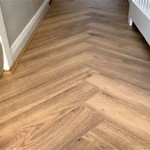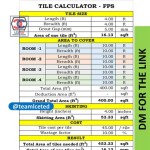Understanding Flooring Strap Clamps: A Comprehensive Guide
Flooring strap clamps are essential tools used in hardwood floor installations and other similar woodworking projects. They provide a secure and even clamping force to join flooring planks tightly together, minimizing gaps and ensuring a professional, seamless finish. This article provides a detailed overview of flooring strap clamps, covering their purpose, types, advantages, proper usage, maintenance, and factors to consider when selecting the right clamp for a specific project.
The primary function of a flooring strap clamp is to compress and hold flooring boards together while the adhesive or fasteners used to secure them cure. This ensures that the boards are aligned correctly and that any gaps between them are eliminated. Without the consistent pressure exerted by a strap clamp, flooring installations can suffer from unsightly gaps, uneven surfaces, and compromised structural integrity. The clamp applies tension around the perimeter of the flooring area, creating a unified and tight bond between individual planks.
Beyond just hardwood floors, these versatile clamps are also applicable in various other woodworking tasks. They can be used to assemble large frames, secure irregularly shaped objects for gluing, and even provide temporary support during the construction of cabinets or furniture. The adaptability of a strap clamp makes it a valuable addition to any woodworker's toolkit.
Key Point 1: Types of Flooring Strap Clamps
Flooring strap clamps are not a one-size-fits-all solution. Several variations exist, each with its own set of features and benefits. Understanding these differences is crucial for selecting the appropriate clamp for a particular flooring project.
Ratchet Strap Clamps: These are perhaps the most common and widely used type of flooring strap clamp. They utilize a ratchet mechanism to tighten the strap around the flooring. The ratchet allows for precise adjustments and a consistent clamping force. Ratchet clamps are typically durable and can handle considerable tension, making them suitable for larger flooring areas and denser wood species. The ratchet mechanism itself needs to be of good quality to prevent slippage and ensure reliable operation. Look for ratchets with smooth action and robust construction.
Cam Action Strap Clamps: Instead of a ratchet, cam action clamps use a lever-operated cam to tighten the strap. These clamps offer a faster tightening process compared to ratchet clamps, but they may not provide the same level of fine-tuned adjustment. They are often preferred for smaller projects or when speed is a primary concern. The cam mechanism must be properly designed to avoid damaging the strap and to provide adequate clamping force. Materials used in the cam's fabrication are also important; hardened steel is preferable for longevity.
Band Clamps: Band clamps, sometimes referred to as web clamps, utilize a woven nylon or polyester strap and a tightening mechanism, which can be either ratchet or cam-based. They are known for their flexibility and ability to conform to various shapes. While they may not provide the same level of clamping force as heavy-duty ratchet clamps, they are well-suited for curved or irregular flooring layouts. The quality of the webbing is paramount; it should be resistant to stretching and abrasion. Reinforcements at stress points are also beneficial.
Corner Clamps in Conjunction with Strap Clamps: In specific cases, especially when dealing with flooring edges or corners, specialized corner clamps can be used in conjunction with strap clamps. These provide additional support and alignment at critical points, ensuring a square and even installation. They are usually made of metal or durable plastic and are designed to fit snugly against the flooring's edges. The type of corner clamp used will depend on the specific profile of the flooring being installed.
Choosing the correct type of strap clamp depends largely on the project's size, shape, and the type of flooring being installed. For large, rectangular rooms with standard plank widths, a heavy-duty ratchet strap clamp is often the best choice. For smaller or irregularly shaped areas, a cam action or band clamp may be more appropriate. Combinations of different types of clamps might also be necessary for complex installations.
Key Point 2: Utilizing Flooring Strap Clamps Effectively
Simply owning a flooring strap clamp is not enough; proper usage is essential to achieve optimal results and avoid damaging the flooring. The following guidelines outline the best practices for using these clamps effectively.
Preparation is Key: Before applying the clamp, ensure the subfloor is clean, level, and properly prepared. Any debris or imperfections on the subfloor can translate into unevenness in the finished floor. Also, ensure that the first row of flooring is perfectly straight and aligned, as this will serve as the foundation for the rest of the installation. Use a chalk line or laser level to establish a straight reference line. Dry-fitting the planks beforehand without adhesive is a good practice to identify any potential issues with plank alignment or fit.
Protecting the Flooring: Direct contact between the clamp's metal components and the flooring surface can cause scratches and dents. To prevent this, use protective padding between the clamp and the flooring. This padding can be in the form of felt pads, rubber shims, or even pieces of cardboard. The type of padding material will depend on the flooring material; softer woods might require thicker padding. Pay particular attention to the corners and edges, as these are the most vulnerable to damage. Apply painter's tape to the flooring edges as an additional protective layer.
Applying Even Tension: The key to a successful flooring installation is applying consistent and even tension across the entire area. Avoid overtightening the clamp in one area while leaving other areas loose. Distribute the tension evenly to prevent bowing or warping of the planks. Monitor the gaps between the planks as you tighten the clamp, ensuring that they are closing uniformly. If necessary, use multiple strap clamps to distribute the tension more effectively. Proper tensioning will result in minimal gapping and a flat, even surface.
Securing the Straps: Ensure that the strap is properly threaded through the clamp's mechanism and that it is securely locked in place. A loose strap can slip and cause the flooring to shift, compromising the installation. Inspect the strap regularly for signs of wear and tear, and replace it if necessary. The strap should be free from kinks or twists, which can weaken it and reduce its effectiveness. When using a ratchet clamp, avoid over-ratcheting, as this can damage the strap or the clamp itself.
Curing Time and Removal: Allow sufficient curing time for the adhesive to fully set before removing the clamp. Refer to the adhesive manufacturer's instructions for the recommended curing time. Premature removal of the clamp can cause the flooring to shift and result in gaps or unevenness. Once the curing time has elapsed, carefully release the tension on the strap before removing the clamp. Avoid sudden releases of tension, which can shock the flooring and potentially cause damage. Inspect the flooring after removing the clamp to ensure that the installation is satisfactory.
Key Point 3: Maintenance and Longevity of Flooring Strap Clamps
Like any tool, flooring strap clamps require proper maintenance to ensure their longevity and optimal performance. Following these maintenance tips will help extend the life of the clamp and prevent costly replacements.
Cleaning after Use: After each use, thoroughly clean the clamp to remove any adhesive, dust, or debris. Use a damp cloth and mild detergent to clean the strap and the metal components. Avoid using harsh chemicals or abrasive cleaners, as these can damage the strap or the clamp's finish. Pay particular attention to the ratchet or cam mechanism, as this is where debris can accumulate and hinder performance. A small brush can be used to clean hard-to-reach areas.
Lubrication: Regularly lubricate the moving parts of the clamp, such as the ratchet or cam mechanism, with a light oil or silicone lubricant. This will help keep the clamp operating smoothly and prevent rust or corrosion. Apply the lubricant sparingly, avoiding excessive lubrication, which can attract dust and debris. Follow the manufacturer's recommendations for the type of lubricant to use.
Inspection for Wear and Tear: Periodically inspect the clamp for signs of wear and tear, such as frayed straps, damaged ratchets, or corroded metal components. Pay particular attention to the strap, as this is the component that is most susceptible to damage. Replace worn or damaged straps immediately to prevent failure during use. Check the integrity of the ratchet or cam mechanism to ensure that it is functioning properly. If any components are damaged beyond repair, consider replacing the entire clamp.
Proper Storage: Store the clamp in a dry, clean place to prevent rust and corrosion. Avoid storing the clamp in direct sunlight or extreme temperatures, as this can damage the strap and the metal components. Consider storing the clamp in a tool bag or case to protect it from dust and debris. Ensure that the strap is properly coiled or folded to prevent kinks or twists.
Regular Calibration (If Applicable): Some high-end strap clamps may feature calibration settings. If the clamp has this feature, ensure that it is calibrated regularly to maintain accuracy. Refer to the manufacturer's instructions for the calibration procedure. A properly calibrated clamp will provide consistent and reliable performance.
By following these maintenance tips, users can ensure that their flooring strap clamps remain in good working condition for years to come. This will not only save money on replacements but also ensure that future flooring installations are completed with precision and ease.
Selecting the right flooring strap clamp and using it correctly are vital for achieving a professional-looking and durable flooring installation. While the initial investment in a quality clamp may seem significant, the long-term benefits in terms of time saved, improved results, and reduced risk of flooring damage far outweigh the cost. By understanding the different types of clamps, mastering proper usage techniques, and implementing a consistent maintenance routine, both professional installers and DIY enthusiasts can leverage the power of flooring strap clamps to create beautiful and lasting floors.

Why Flooring Straps Make My Life As An Installer Easier Wood Floor Business

Bessey Flooring Strap Clamp Lee Valley Tools

Flooring Installation Clamp Belt Ht Ratchet Strap Tension

Bessey Svh400 Flooring Plank Ratchet Strap Clamp Kevmor Trade Supplies

Strap Clamps For Glue Down Engineered Hardwood Floors Tips

Bessey 13 Flooring Strap Clamp

Laminate Tie Down Strap 5m Toolstation

Why Flooring Straps Make My Life As An Installer Easier Wood Floor Business

Bessey Svh 760 Plank Strap Flooring Clamp Kevmor

Two Hardwood Floor Installation Clamp Wood Flooring Install Tension Strap Tool
Related Posts








